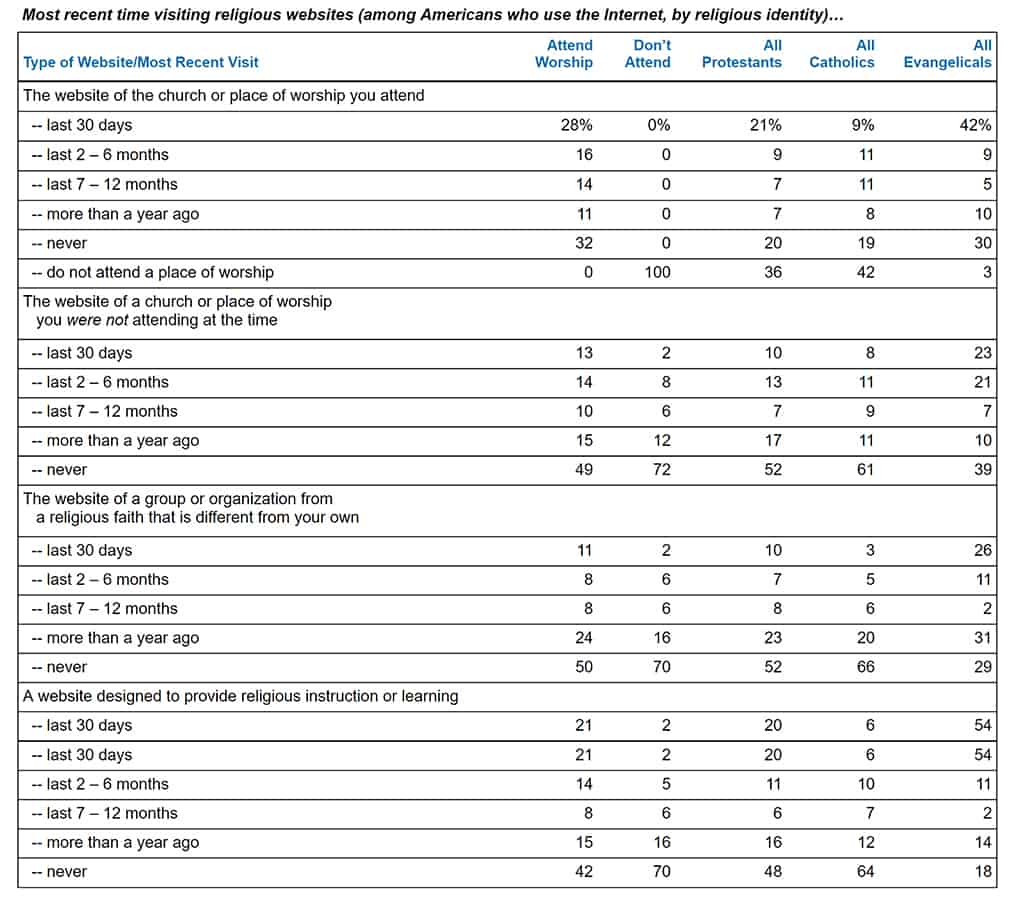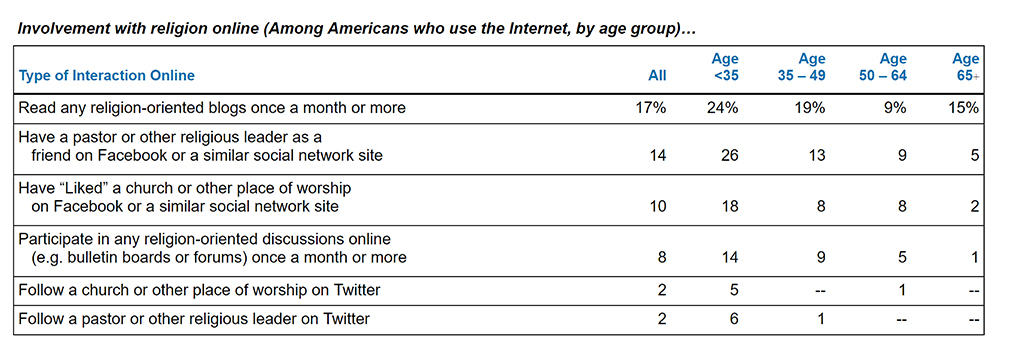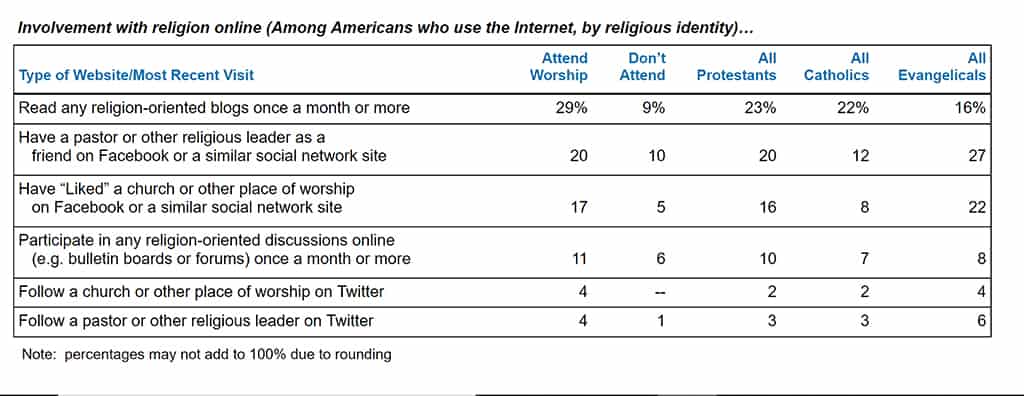Almost half of online Americans use the Internet for religious purposes
(Original release date: May 17, 2012) Almost half of all American adults who are online are using the Internet for religious purposes, according to a new study from Grey Matter Research (Phoenix, Arizona). That 44% of online Americans use the Internet in this manner means the Internet is used for religious purposes by 35% of all American adults.
Grey Matter Research surveyed a demographically representative sample of 1,011 American adults who use the Internet and explored their use of the online world for religious purposes. The research shows a variety of ways online Americans use the Internet for spiritual purposes:
- Nineteen percent have, in the past six months, visited the website of a church or other place of worship they are currently attending
- During that same time frame, another 17% have visited the website of a church or place of worship they were not attending
- Nineteen percent have visited a website designed to provide religious instruction or learning during the last six months
- Seventeen percent read religion-oriented blogs once a month or more
- Fourteen percent have a pastor or other religious leader as a friend on Facebook or a similar social network site
- Eleven percent have visited the website of a group or organization from a religious faith that is different from their own during the last six months
- One out of ten have “Liked” a church or other place of worship on Facebook or a similar social network site
- Eight percent participate in religion-oriented discussions online (e.g. bulletin boards or forums) once a month or more
- Two percent follow a church or other place of worship on Twitter
- Another 2% follow a pastor or other religious leader on Twitter
Among online Americans, Internet use for religious purposes is particularly common among the young. Fifty-seven percent of online adults under age 35 use the Internet for religion, compared to 48% who are 35 to 49 years old, 36% who are 50 to 64, and 31% who are 65 or older.
It is likely no surprise that people who are religiously active are particularly liable to use the Internet for religious purposes. For instance, 69% of those who attend worship services once a month or more use the Internet for spiritual purposes, compared to 27% of those who do not attend worship regularly. Similarly, religious use of the Internet is 70% among people who read the Bible or another sacred text at least once a month, versus 28% among those who do not.
However, religious use of the Internet does not tend to vary much according to which religious identity people claim. Protestants and Roman Catholics are equally likely to use the Internet for spiritual purposes, and people who identify with a non-Christian religion are just as likely as those who identify with a Christian group to do so. One exception is evangelical Christians. Ninety-one percent of evangelicals who are online use the Internet for religious purposes, which is much higher than for any other religious group measured.
What may be a bit surprising is how much the Internet is used for religious purposes by people who are not religious. In addition to the fact that 27% who don’t attend religious services still use the Web for religious purposes, The Internet is used in this manner by 23% of atheists and agnostics, along with 19% of online Americans who claim no particular religious identification. Of course, use of the Internet by the irreligious does not necessarily mean they are using it for spiritual purposes the same way religious people are.
Ron Sellers, president of Grey Matter Research, pointed out that the religious community online does not necessarily look like the offline religious community. “Young people are especially likely to be using the Internet for religious purposes, and considering that older Americans in general are less likely than younger people to be online at all, the gap is even greater when that’s taken into consideration,” Sellers said. “Yet younger Americans in general are less likely than older people to attend worship services or claim any specific religious identity. Involvement in spirituality and expressions of faith differ considerably by generation – and young people are obviously looking to the Internet to be a significant part of their faith experience.”
Part of this diversity online extends beyond age. “Partly because of the younger skew of people using the Web for religious reasons, religious Internet use also is especially common among Latinos, Asian-Americans, and African-Americans. It’s also fairly common in locales that tend to show lower worship attendance – urban areas, the Northeast, and the West included,” Sellers explained.
Sellers also noted how much diversity there is in how the Internet is used for spiritual purposes. “No one type of religious use or method dominates Internet religion,” he explained. “Eight different activities we evaluated saw participation from between eight and nineteen percent of online adults, from blogs to church websites to social media. There’s tremendous diversity in who is using the Web for spirituality, but also in how it’s getting used for that purpose.”
Study Details:
The study was conducted by Grey Matter Research, a research and consumer insights company located in Phoenix, Arizona. Grey Matter has substantial experience with research related to religious topics. The sample of 1,011 online adults is accurate to within ±3.1 percentage points at the 95 percent confidence level with a 50 percent response distribution.
The study was conducted in all 50 states. Respondents’ age, education, household income, geography, racial/ethnic background, Internet use, and gender were carefully tracked and weighted to ensure appropriate representation and accuracy.




